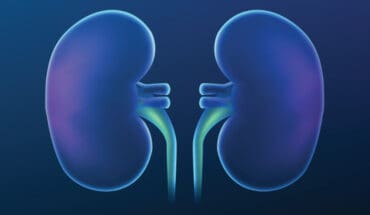Thousands of years after humans discovered the pain-relieving effects of resin from opium poppies, clinicians still rely on opioids, which are drugs derived from poppies or synthetic versions, to treat severe pain, which reduce the intensity of pain signals reaching the brain. Opioids bind to specific receptors in the nerve system, mimicking a natural neurotransmitter which triggers production of feel-good chemical dopamine. This has a general calming effect and also reduces pain sensations.
Medications that fall within this class include hydrocodone (Vicodin), oxycodone (OxyContin, Percocet) and morphine (Kadian, Oromorph) and codeine.
‘Opioids still work best for people suffering from serious injury or disease like cancer and there are variations of the opioid molecule which can be used in different circumstances,’ says Professor Steve Bazire, Honorary Professor, School of Pharmacy, University of East Anglia, Norwich. Codeine is used for milder pain while morphine, which is stronger than codeine, is used to take away the pain after surgery.
‘Sadly, in terms of available medications, the cupboard is rather bare. Opioids have obvious drawbacks,’ explains Dr Roger Knaggs, an Advanced Pharmacy Practitioner – Pain Management at Nottingham University Hospitals NHS Trust. ‘Not least is that they are addictive. The patient needs to take drugs all the time to prevent an unpleasant withdrawal effect. He or she will also experience intense cravings to have the pleasurable effects when the drug starts to wear off. They also have many side effects including constipation and drowsiness. Unfortunately, there are very few other pain-relieving molecules in development.’
A newer opioid drug, buprenorphine, which is less addictive because its effects taper off at higher doses which prevents spiralling of dosages, is now available in some countries as a long-lasting implant which can be placed under the skin of the arm. It lasts for up to six months. This is licensed in the USA to help opioid dependence, by providing a constant low-level dose of buprenorphine. This stops cravings and withdrawal, but also prevents overdose or misuse. But could be used as a long-lasting pain relief,’ says Professor Bazire. It is not currently available here.
However, there are some completely new classes of pain drugs on the horizon. Resiniferatoxin, (RTX) is an experimental compound derived from the resin of a spiny cactus-like plant called Euphorbia resinifera. Studies have shown that the active ingredient of this resin binds to a receptor found on the surface of heat-pain sensing nerve cells. This prompts an influx of calcium ions to pour into the cell, killing it. Without the nerve cells in a localised area, there is no transmission of pain signals.
Another plant extract from the bark of the French maritime pine tree, Pycnogenol, has been found to have natural inflammatory properties. Although it is not any more effective than aspirin in trials, it does not cause gastric irritation like aspirin. Its ability to reduce joint pain in arthritis sufferers by 55 per cent was reported in the Journal of Phytotherapy Research in 2008 and since then it has been widely sold as a supplement. Pycnogenol, which is available without prescription, contains chain-like structures known as catechins similar to those found in green tea. Catechins are potent antioxidants that have been linked to improved blood flow and could aid healing.
A US study published in the July 2013 issue of the Annals of Neurology reported that a derivative of docosahexaenoic acid (DHA), the main ingredient of fish oil supplements, can reduce and even prevent pain caused by nerve damage and nerve swelling caused by injuries such as knocks. Researchers at Duke University found that a bioactive lipid found in DHA, fatty acids that play a role in many body responses from inflammation to allergy, is also present in human white blood cells. This lipid helped to reduce brain inflammation.
And a high-pressure oxygen therapy used to treat burn victims also seems to help women suffering from the rheumatic condition characterised by stiffness and pain, fibromyalgia, according to an Israeli study published in PloS ONE in July 2015. Researchers at Tel Aviv University looked at 60 women who suffered from the condition and found that 70 per cent of women who underwent the therapy for a two months period, had significant improvement of their symptoms which included musculoskeletal pain, fatigue, memory loss and mood swings.
‘Devices like TENS machines can offer some relief and others say that acupuncture is helpful. For short-term acute pain, paracetamol, aspirin and ibuprofen are very effective and are often overlooked, according to Professor Bazire.
- The da Vinci 5 Robot Is Set To Transform Bariatric Care: - 31st March 2025
- Beyond money: the hidden drivers fuelling child food insecurity - 31st March 2025
- Tobacco and Vapes Bill - 31st March 2025






